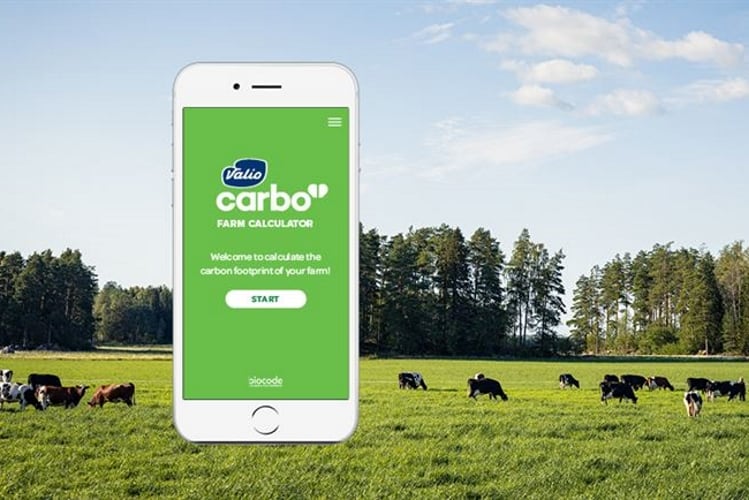To assist with this, the company is now launching a calculator that its farms can use to measure their own carbon emissions and identify the most effective actions to lower them.
These actions are likely to result in dairy products with a lower carbon footprint, Valio said. The methodology behind the tool is certified by global climate and sustainability experts, the Carbon Trust.
According to the FAO, the global average carbon footprint of raw milk is currently 2.5 CO2e per liter. In Finland, Valio estimates the figure is around 1 CO2e per liter. Using the calculator, emissions reductions can be measured and verified at the farm level.
The Valio scientist that developed the model, Aleksi Astaptsev, said, “Finnish cows’ methane emissions per liter of milk have halved in 50 years as a result of improved animal productivity, health, and nutrition. Cows today can produce more milk with the same amount of feed. Despite this development, our climate impact is still significant. We are humble about the challenges and we are pursuing ways to lower the figures even further.”
Rami Rauhala and his wife Johanna operate a 65-cow dairy farm in Sievi, western Finland. The carbon footprint of the Hilliaho dairy farm was calculated as part of the work to develop the calculator.
Rauhala said, “Climate-smart milk production is also resource efficient, i.e. it makes good sense economically. Most of the fields on our farm are either grass silage or grazing pastures. We have also over-seeded to make the vegetation as thick as possible.
“In our area, the significance of re-parcelling is also big. Parcels that have over time become fragmented have been re-parcelled into feasible parcels among land owners. When fields are closer to the farm center, tractors use less fuel. It has been great to notice that us milk producers are part of the solution to climate change. I believe that a growing share of consumers value our work as environmentally sustainable food producers.”
Valio’s goal is for all its farms to be using the tool within the next five years. So far, data has been collected from 100 farms.
Astaptsev said the calculator is easy to use and the farmers already have most of the data at hand.
“I estimate that the average farm can lower its emissions by 30% by 2025. At the same time, we are of course working to reduce emissions from Valio’s factories, transportation and in packaging,” he said.
Valio’s carbon footprint calculation uses the Intergovernmental Panel on Climate Change (IPCC) methodology and data from Valio’s own scientific work that started as animal nutrition research 10 years ago.
Valio will continue developing the carbon footprint calculator. Life cycle models for calculating the carbon footprint of food products do not currently include the soil’s carbon balance. So the carbon footprint of milk, or of any other food, doesn’t include the emissions or carbon binding of the soil.
“Carbon binding in grass fields and emissions from farming peat fields should also be included in the calculations in order to get a more accurate picture of a food’s carbon footprint. Another area of development is combining the nutritional values of different foods with their carbon footprints,” Astaptsev said.
Valio said in 2020, it will set targets that are in line with the Paris Agreement; that the temperature increase must be limited to 1.5 degrees.

